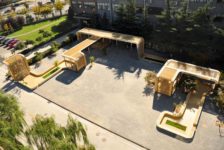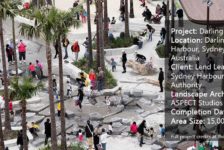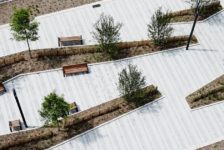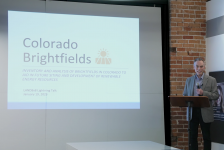We look at some of the most exciting and essential plugins for SketchUp. Ever since Sketchup (formerly Google Sketchup) debuted in 2000, it has been holding its position as one of the world’s favorite and most used 3d-modeling software systems available. Sketchup, designed by Last Software, is used by both students and professionals in various design fields, including architecture, landscape architecture, animation, and video game development. It has a wide range of tools and scripts to develop various three-dimensional forms that are helpful for modeling and sculpting 3D models. However, there are several design functions that cannot be performed by Sketchup alone. Such operations involve much more complexity. So here are some software plug-ins that are available to download that can be helpful aids in performing those missing actions. The following also includes some rendering engines used by professionals and students to create presentations that look like real-life objects. Such rendering engines can add details such as ridges and grooves, improving the overall appearance of surfaces.
Plugins for Sketchup
1. Curviloft (free) This tool is very effective and dedicated to performing loft and skinning through Sketchup. This tool is used to generate surface from contours provided by the user, and has two methods of lofting — Loft by spline method and loft along path method. Loft by spline joins separate contours by smooth splines; Loft along path generates a loft along a curve specified by the user. WATCH: Curviloft preview 2. Bezier Curve (free) This tool allows you to generate polylines, Beziers, and spline curves. It generates curves based on control points that can be easily manipulated, scaled, and moved in order to deform the predefined curve. The curves generated using the Bezier Spline tool are more complex than normal Sketchup curves. WATCH: Comparing Bezier Curves And Splines | SketchUp Lessons 3. Shape Bender (free) This plug-in helps in bending an existing group to match any curved line. For example, it can be used to design serpentine roads. WATCH: Shape Bender – Ramps and Roads 4. Joint Push/Pull (free) Sketchup doesn’t support extruding (push/pull) curved surfaces, but with the help of the Joint push/pull tool, multiple surfaces can be “pushed/pulled” simultaneously. This tool is very useful for creating volumetric solids, curved-in multiple axes, or building elements extruded along walls. WATCH: SketchUp: Plugin Joint PushPull 4. Unfold (free) This is a very useful tool that allows users to convert 3D models or objects into a two-dimensional plane or orthographic projection. It is so simple to use that the user need only click the unfold tool from the plug-in menu and select the 3D object that needs to be converted into a 2D plane. WATCH: Google SketchUp — Unfold Tool 5. Round Corner (free) The Round Corner toolset is very useful for chamfering edges or to reduce smoothing of specified 3D objects in Sketchup, which is not possible with Sketchup alone. It is a well-executed plug-in allowing users to round, sharpen, and bevel edges of any configuration and complexity. WATCH: SketchUp: Plugin Round Corner
Render Plugins for SketchUp:
6. V-Ray Render (paid, trial pack available) V-Ray is the rendering engine used by more design practitioners than any other. V-Ray was developed by Chaos Group, an important company in the design industry. WATCH: Custom Home Made in Sketchup, Rendered in Vray (demo reel) V-Ray uses advanced techniques such as the global illumination (GI), and algorithms such as path tracing, photon mapping, and irradiance mapping, which when combined simulate the physics of real-world lighting effects. Now 3D lighting techniques used by photographers and filmmakers can be applied to computer graphics to bring out an extra level of realism. 7. Maxwell Render (free demo version available) Maxwell Render is developed by Next Time Technologies and their initially released in 2006. Maxwell Render is a Raytracer-type rendering engine, and as such it is an unbiased 3D renderer. Maxwell Render utilizes Global illumination (GI) and algorithms based on metropolis light transport variation, providing the effect of exact physical aspects of the material rendered. Maxwell therefore gives a high quality and a less noisy result. Recommended Reading:
- Top 10 Hints & Tips For SketchUp
- 3D Modeling Software for Landscape Architects
- Computer Aided Software for Landscape Architects: The Essential Guide
WATCH: Using SketchUp with Maxwell Plug-In to Create Night, Dusk, and Evening Renderings 8. Kerkythea (free) Kerkythea was developed by Ioannis Pantazopoulos and released in 2005. It is a stand-alone rendering system that supports raytracing and Metropolis light transport. It is capable of rendering high quality, photo-realistic renders, utilizing caustics and global illumination (GI). WATCH: Kerkythea Tutorial – The Basics Kerkythea is even used for making clay renders. It is notable that Alex Hogrefe is one of the best practitioners in architectural visualization. He has his own website – www.visualizingarchitecture.com — through which he gives tutorials and tips for designers to improve their portfolios. He uses Kerkythea in most of his demonstrations for making clay models out of 3D models done on Sketchup. 9. Raylectron (paid, free trial available) Raylectron is a rendering engine developed by SoftByte Labs Inc. in 2010. Raylectron utilizes path tracing; it does not use approximation and/or emulation (as other conventional render engines do). Raylectron is capable of producing animations based on scenes either developed in Sketchup or in Raylectron itself. WATCH: Raylectron v3 Quick Tour Tutorial Raylectron is widely used by landscape designers and architects for creating trees, bushes, and other landscape objects. A unique capability of Raylectron is that each object can be individually rotated and scaled. 10. SU Podium (paid, free trial available) SU Podium was developed by Cadalog Inc. It is used to create photorealistic rendered images of Sketchup models. SU Podium functions entirely inside Sketchup and uses Sketchup objects such as textures, backgrounds, colors, shadows, groups, and HDRI. SU Podium utilizes raytracing and global illumination (GI). SU Podium also features several different types of natural and artificial lights, sky light, Omni light, LEM lights, and spot lights. SU Podium has some additional features such as direct reflection, blurred reflection, refraction, caustics, bumps, and physical sky. WATCH: SU Podium V2 Introduction One of the main reasons behind Sketchup being used by people in the design industry is that it supports a wide range of plug-ins and provides models that can be exported in many formats. Most of these plug-ins can be downloaded for free from the extension warehouse of Sketchup (Bezier tools, unfold tools, round corner tools, and shape bender, for example). These plug-ins are very helpful for providing results that can’t be achieved with Sketchup alone. The combination of Sketchup and these plug-ins will really make your work stand out.
Recommended Reading for SketchUp Enthusiasts:
- SketchUp 2014 For Dummies by Aidan Chopra
- Rendering in SketchUp: From Modeling to Presentation for Architecture, Landscape Architecture and Interior Design by Daniel Tal
Article by Sha Suliman Return to Homepage Featured image: Printscreen from Youtube, source
Published in Blog










